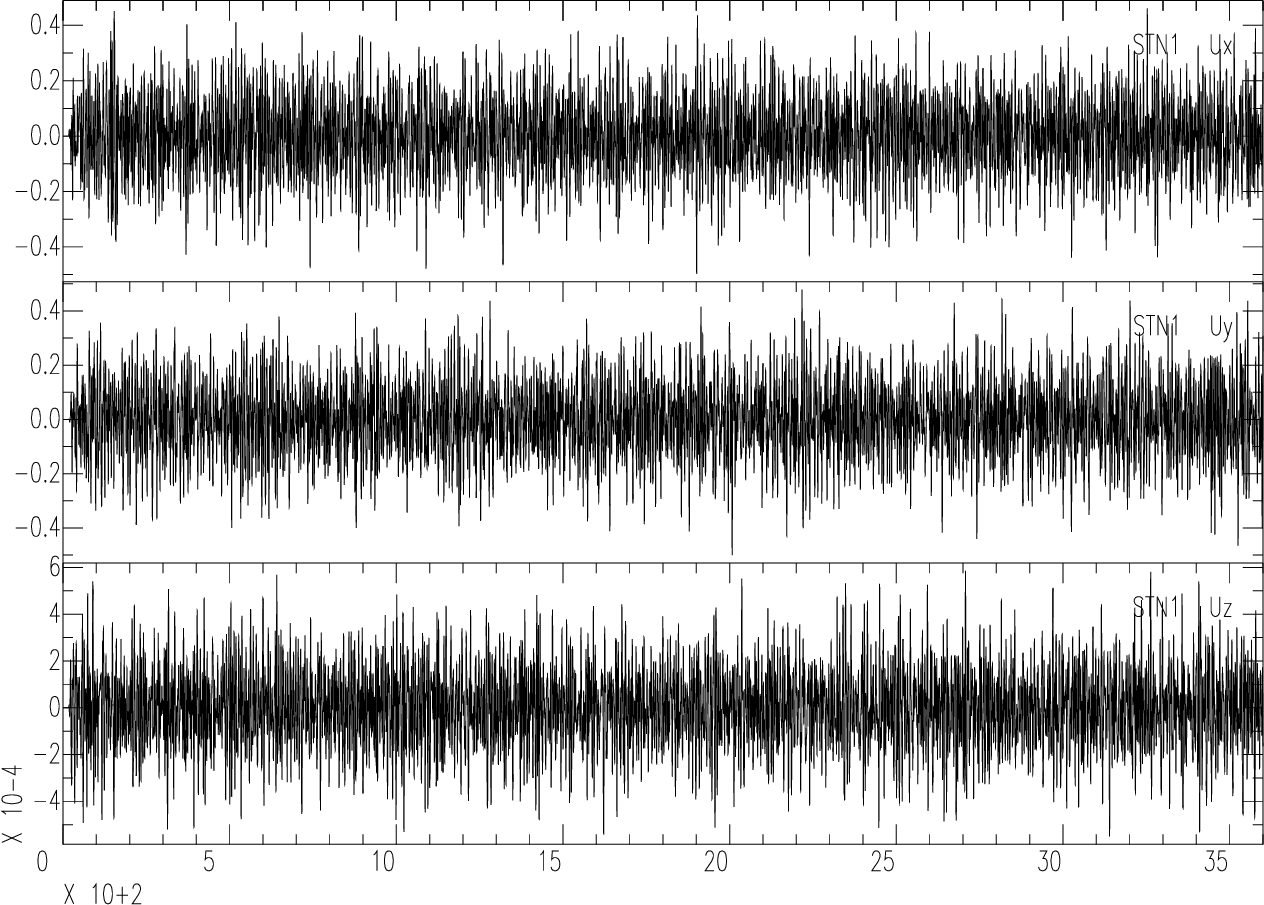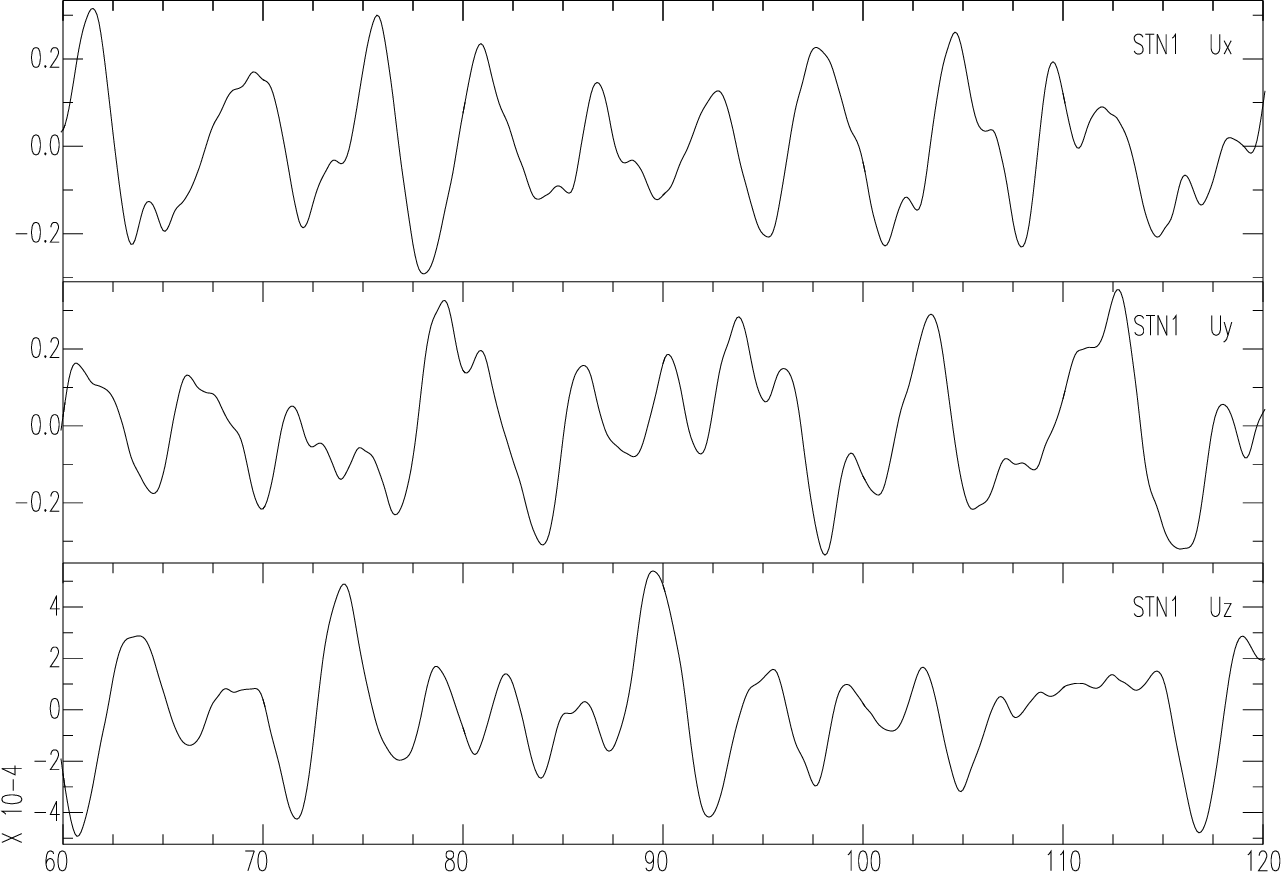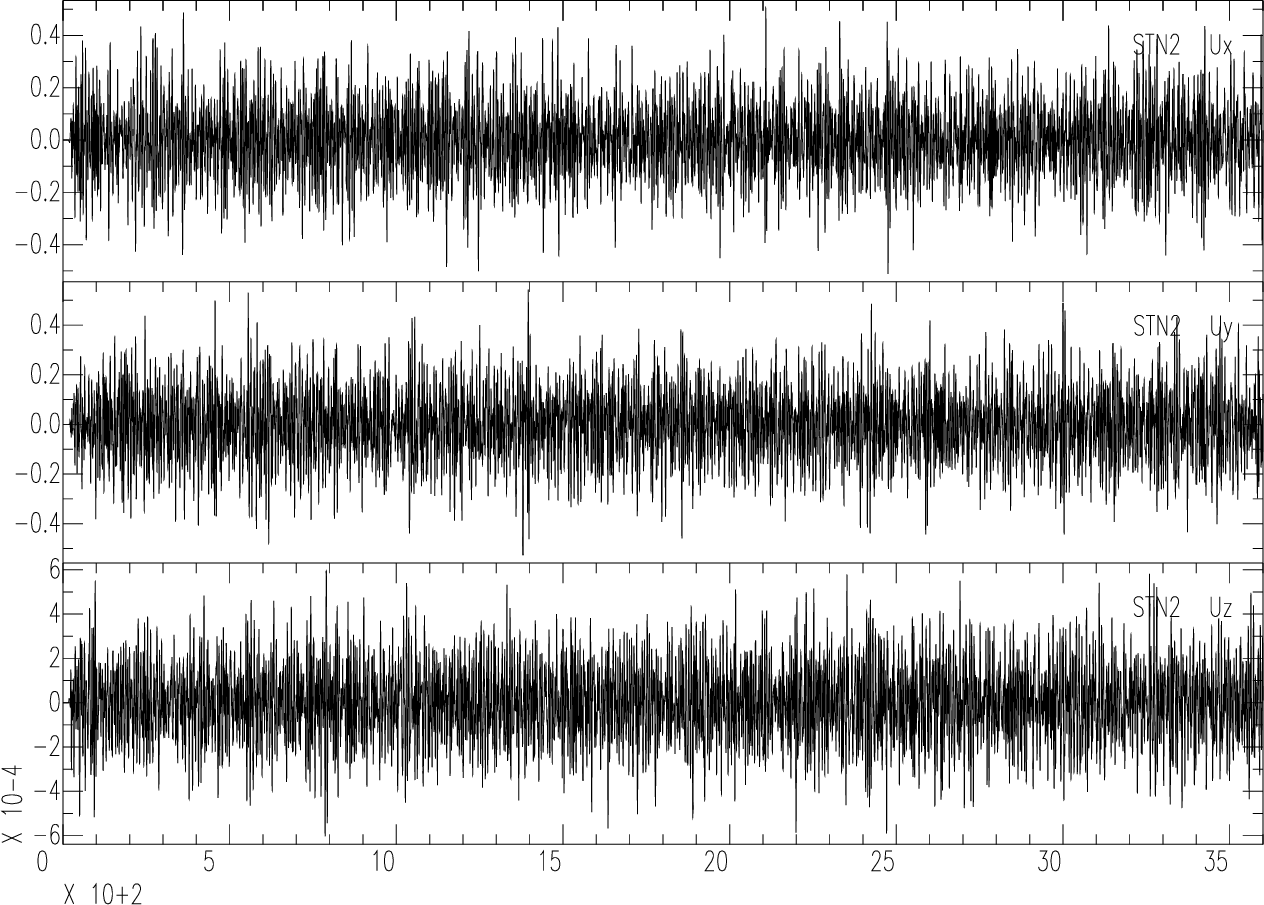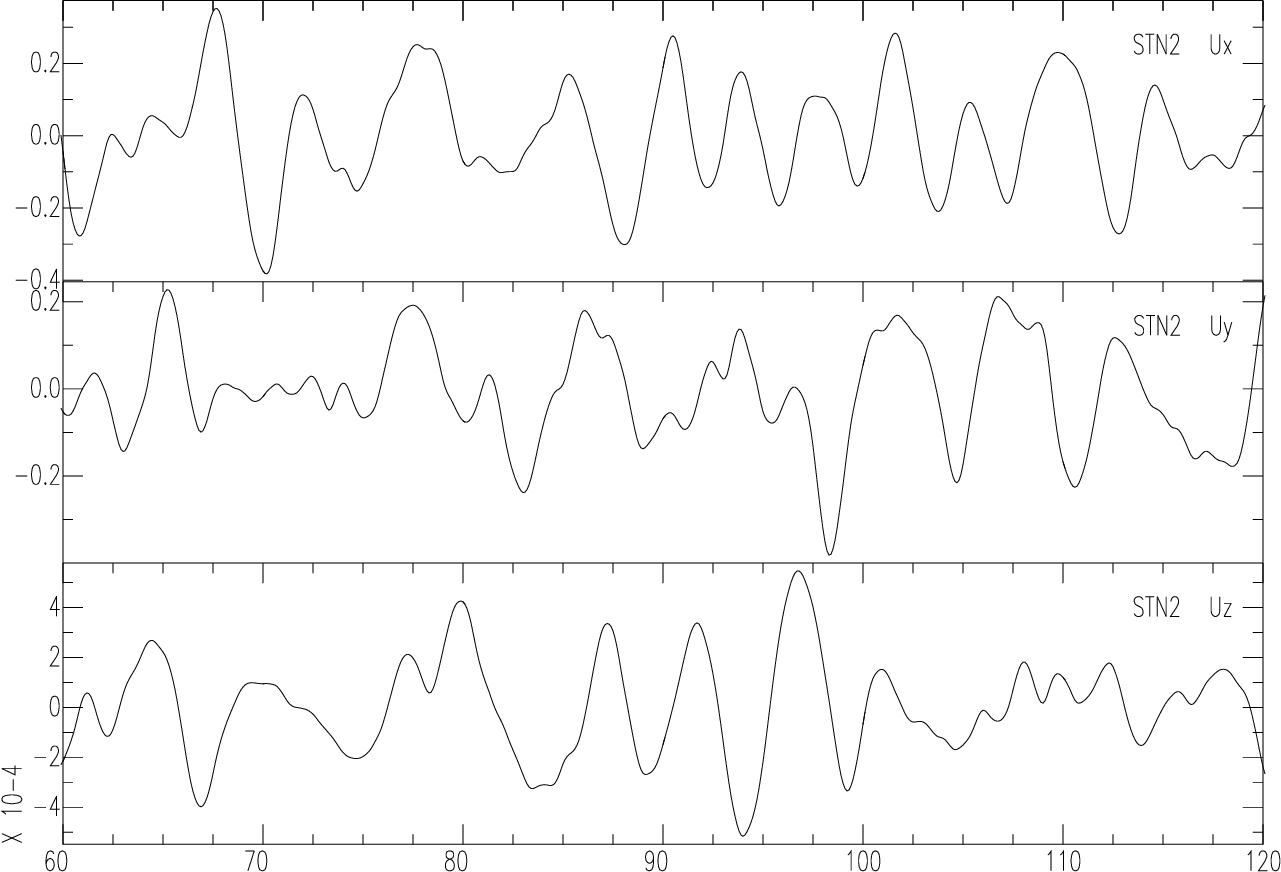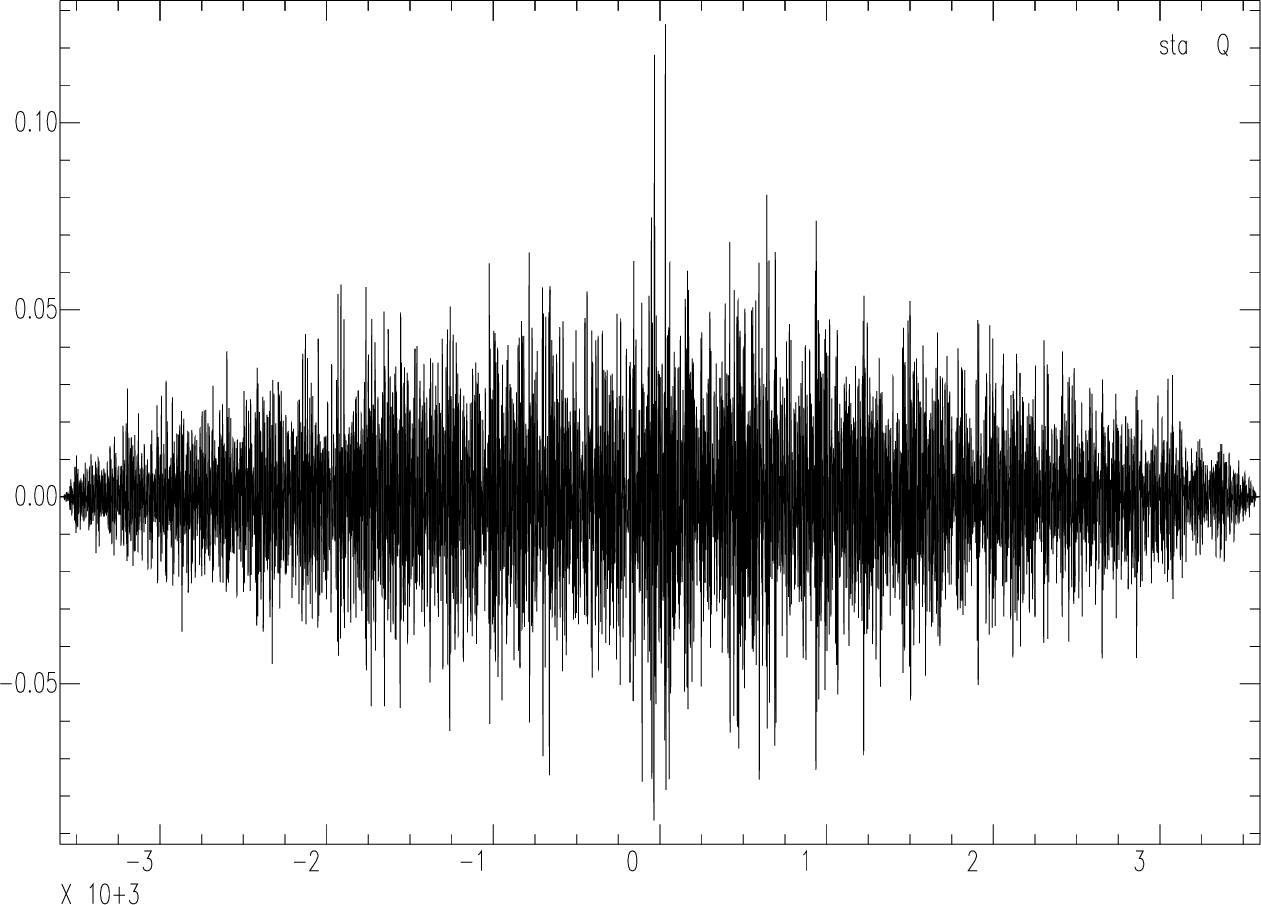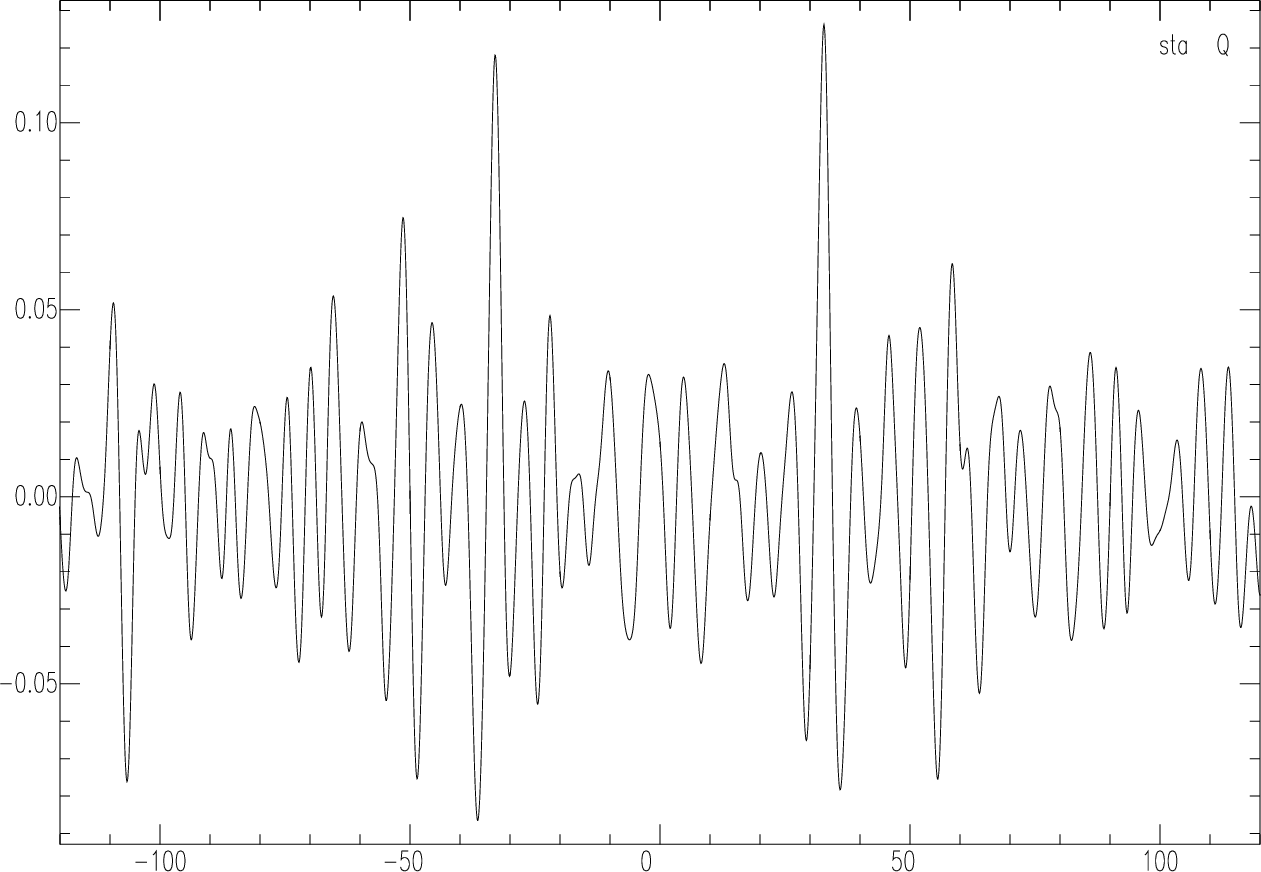パラメータ名
Parameter name
|
意味
Meaning
|
可能なパラメータ値
Allowed parameter values
|
デフォルト値
Default value
|
| output_config_file |
出力ファイル名(地震波動ソースの設定ファイル)。
The output file name for
the configuration of seismic wave sources.
|
ファイル名を表す文字列。拡張子は何でも良い。ディレクトリパスを含んでいても良い。
A string that represents a file name with an arbitrary extension,
possibly including a directory path.
|
省略不可
Cannot be omitted |
| output_coordinate_list_file |
出力ファイル名(地震波動ソースの座標リスト)。
The output file name for
a list of the coordinates of seismic wave sources.
|
ファイル名を表す文字列。拡張子は何でも良い。ディレクトリパスを含んでいても良い。
A string that represents a file name with an arbitrary extension,
possibly including a directory path.
|
省略時はファイルが出力されない。
The file is not created if this parameter is omitted.
|
| geometry |
地震波動ソースの分布域の形状。
The geometry of the region of seismic wave sources.
|
- sphere
ある基準点\(\posx_0=(x_0,y_0,z_0)\)からの
距離\(r\)の範囲(\([r_{min},r_{max}]\))で
分布域を定義する。
球状(\(r_{min}=0\)の場合)あるいは球殻状の分布となる。
Define the region by
a range \([r_{min},r_{max}]\) of the distance \(r\)
from a reference point \(\posx_0=(x_0,y_0,z_0)\).
The seismic wave sources are distributed
in a sphere (in case of \(r_{min}=0\))
or a spherical shell.
- cylinder
\(\posx_0=(x_0,y_0,z_0)\)をある基準点、
\(\myvector{v}=(v_x,v_y,v_z)\)をある単位方向ベクトルとして
\(\posx_0+p\myvector{v}\) (\(p\):任意の実数)
は1つの直線をなす。
この直線からの距離\(r\)の範囲(\([r_{min},r_{max}]\))と
\(p\)の範囲\([p_{min},p_{max}]\)で
分布域を定義する。
円筒状の分布となる。
Let \(\posx_0=(x_0,y_0,z_0)\) be a reference point and
\(\myvector{v}=(v_x,v_y,v_z)\) be a unit directional vector.
Then, \(\posx_0+p\myvector{v}\),
where \(p\) is an arbitrary real number,
indicates a straight line.
Define the region by
a range \([r_{min},r_{max}]\) of the distance \(r\)
from this straight line and
a range \([p_{min},p_{max}]\) of \(p\).
The seismic wave sources are distributed
in a cylindrical region.
- rectangle
\(\posx_0=(x_0,y_0,z_0)\)をある基準点、
\(\myvector{v}=(v_x,v_y,v_z)\), \(\myvector{w}=(w_x,w_y,w_z)\)
を互いに直交する2つの単位方向ベクトルとする。座標を
\(\posx_0+p\myvector{v}+q\myvector{w}
+r\myvector{v}\times\myvector{w}\)
(\(p,q,r\): 実数)のように表現したときの
\(p\)の範囲\([p_{min},p_{max}]\),
\(q\)の範囲\([q_{min},q_{max}]\),
\(r\)の範囲\([r_{min},r_{max}]\)
で分布域を定義する。
直方体状の分布となる。
Let \(\posx_0=(x_0,y_0,z_0)\) be a reference point and
\(\myvector{v}=(v_x,v_y,v_z)\) and \(\myvector{w}=(w_x,w_y,w_z)\)
be two unit directional vectors that are mutually orthogonal.
An arbitrary coordinate can be expressed as
\(\posx_0+p\myvector{v}+q\myvector{w}
+r\myvector{v}\times\myvector{w}\),
where \(p\), \(q\), and \(r\) are real numbers.
Define the region by ranges
\([p_{min},p_{max}]\), \([q_{min},q_{max}]\),
and \([r_{min},r_{max}]\) of
\(p\), \(q\), and \(r\) , respectively.
The seismic wave sources are distributed
in a region of rectangular solid geometry.
- surface_circle
3次元地形を用いた計算用のオプションである。
ある水平位置の基準点\(\posx_0=(x_0,y_0)\)からの
水平距離\(r\)の範囲\([r_{min},r_{max}]\)と
地表面からの深さ\(d\)の範囲\([d_{min},d_{max}]\)で
分布域を指定する。
分布域の水平位置は円形(\(r_{min}=0\)の場合)あるいはドーナツ型となり、
\(z\)方向は地表面に平行な一定の厚みの領域となる。
This option is for a computation using a 3-D topography.
Define the region by
a range \([r_{min},r_{max}]\) of the horizontal distance \(r\)
from a horizontal reference point \(\posx_0=(x_0,y_0)\)
and a range \([d_{min},d_{max}]\) of the depth \(d\)
from the ground surface.
The seismic wave sources are distributed horizontally
in a circle (in case of \(r_{min}=0\)) or a doughnut,
with a vertical region of uniform thickness
parallel to the ground surface.
- surface_rectangle
3次元地形を用いた計算用のオプションである。
\(\posx_0=(x_0,y_0)\)をある水平位置の基準点、
\(\myvector{v}=(v_x,v_y)\)を水平面内のある単位方向ベクトル、
\(\myvector{w}=(-v_y,v_x)\)とする。
水平位置座標を
\(\posx_0+p\myvector{v}+q\myvector{w}\)
(\(p,q\): 実数)のように表現したときの
\(p\)の範囲\([p_{min},p_{max}]\),
\(q\)の範囲\([q_{min},q_{max}]\)
で分布域の水平範囲を定義する。
\(z\)方向は地表面からの深さ\(d\)の範囲\([d_{min},d_{max}]\)で
分布域を定義する。
分布域の水平域は長方形となり、
\(z\)方向は地表面に平行な一定の厚みの領域となる。
This option is for a computation using a 3-D topography.
Let \(\posx_0=(x_0,y_0)\) be a reference point,
\(\myvector{v}=(v_x,v_y)\) be a unit directional vector
in a horizontal plane, and \(\myvector{w}=(-v_y,v_x)\).
An arbitrary horizontal coordinate can be expressed as
\(\posx_0+p\myvector{v}+q\myvector{w}\),
where \(p\) and \(q\) are real numbers.
Define the region by ranges
\([p_{min},p_{max}]\) and \([q_{min},q_{max}]\)
of \(p\) and \(q\), respectively,
and a range \([d_{min},d_{max}]\) of the depth \(d\)
from the ground surface.
The seismic wave sources are distributed horizontally
in a rectangle, with a vertical region of uniform thickness
parallel to the ground surface.
|
sphere |
| x0 |
地震波動ソースの分布域の定義(パラメータgeometry参照)に用いる
基準点\(\posx_0\)の座標。
The coordinate of a reference point \(\posx_0\)
used to define the region of seismic wave sources
(see the description of parameter geometry).
|
\(x\), \(y\)(, \(z\))成分の値をカンマ(,)で区切って並べた文字列。
A string composed of the values of
\(x\)-, \(y\)-(, and \(z\)-)components
separated by commas (,).
|
省略不可
Cannot be omitted |
| v |
地震波動ソースの分布域の定義(パラメータgeometry参照)に用いる
方向ベクトル\(\myvector{v}\)。
A directional vector \(\myvector{v}\)
used to define the region of seismic wave sources
(see the description of parameter geometry).
|
\(x\), \(y\)(, \(z\))成分の値をカンマ(,)で区切って並べた文字列。
プログラム内で単位ベクトルに自動的に換算されるので
ベクトルの長さは1でなくても良い。
A string composed of the values of
\(x\)-, \(y\)-(, and \(z\)-)components
separated by commas (,).
The length of the vector may not be unity,
as the program automatically computes a unit vector
from the given vector of an arbitrary length.
|
定義に\(\myvector{v}\)が含まれる形状を
パラメータgeometryの値として指定した場合は省略不可。
Cannot be omitted if the definition of geometry,
given by parameter geometry,
includes \(\myvector{v}\).
|
| w |
地震波動ソースの分布域の定義(パラメータgeometry参照)に用いる
方向ベクトル\(\myvector{w}\)。
A directional vector \(\myvector{w}\)
used to define the region of seismic wave sources
(see the description of parameter geometry).
|
\(x\), \(y\)(, \(z\))成分の値をカンマ(,)で区切って並べた文字列。
\(\myvector{v}\)と直交しなければならない点に留意。
プログラム内で単位ベクトルに自動的に換算されるので
ベクトルの長さは1でなくても良い。
A string composed of the values of
\(x\)-, \(y\)-(, and \(z\)-)components
separated by commas (,).
Note that the vector must be orthogonal to \(\myvector{v}\).
The length of the vector may not be unity,
as the program automatically computes a unit vector
from the given vector of an arbitrary length.
|
定義に\(\myvector{w}\)が含まれる形状を
パラメータgeometryの値として指定した場合は省略不可。
Cannot be omitted if the definition of geometry,
given by parameter geometry,
includes \(\myvector{w}\).
|
| p_min |
地震波動ソースの分布域の定義(パラメータgeometry参照)に用いる
\(p_{min}\)の値。
The value of \(p_{min}\)
used to define the region of seismic wave sources
(see the description of parameter geometry).
|
実数。
A real number.
|
定義に\(p\)が含まれる形状を
パラメータgeometryの値として指定した場合は省略不可。
Cannot be omitted if the definition of geometry,
given by parameter geometry,
includes \(p\).
|
| p_max |
地震波動ソースの分布域の定義(パラメータgeometry参照)に用いる
\(p_{max}\)の値。
The value of \(p_{max}\)
used to define the region of seismic wave sources
(see the description of parameter geometry).
|
\(p_{min}\)よりも大きな実数。
A real number greater than \(p_{min}\).
|
定義に\(p\)が含まれる形状を
パラメータgeometryの値として指定した場合は省略不可。
Cannot be omitted if the definition of geometry,
given by parameter geometry,
includes \(p\).
|
| q_min |
地震波動ソースの分布域の定義(パラメータgeometry参照)に用いる
\(q_{min}\)の値。
The value of \(q_{min}\)
used to define the region of seismic wave sources
(see the description of parameter geometry).
|
実数。
A real number.
|
定義に\(q\)が含まれる形状を
パラメータgeometryの値として指定した場合は省略不可。
Cannot be omitted if the definition of geometry,
given by parameter geometry,
includes \(q\).
|
| q_max |
地震波動ソースの分布域の定義(パラメータgeometry参照)に用いる
\(q_{max}\)の値。
The value of \(q_{max}\)
used to define the region of seismic wave sources
(see the description of parameter geometry).
|
\(q_{min}\)よりも大きな実数。
A real number greater than \(q_{min}\).
|
定義に\(q\)が含まれる形状を
パラメータgeometryの値として指定した場合は省略不可。
Cannot be omitted if the definition of geometry,
given by parameter geometry,
includes \(q\).
|
| r_min |
地震波動ソースの分布域の定義(パラメータgeometry参照)に用いる
\(r_{min}\)の値。
The value of \(r_{min}\)
used to define the region of seismic wave sources
(see the description of parameter geometry).
|
実数。
\(\posx_0\)からの距離あるいは水平距離を表す場合には
非負でなければならない。
A real number, which must be non-negative if
it represents a distance or horizontal distance
from \(\posx_0\).
|
\(\posx_0\)からの距離あるいは水平距離を表す場合には0.0。
それ以外で定義に\(r\)が含まれる形状を
パラメータgeometryの値として指定した場合は省略不可。
0.0 if it represents a distance or horizontal distance
from \(\posx_0\).
In the other cases, cannot be omitted if the definition of geometry,
given by parameter geometry,
includes \(r\).
|
| r_max |
地震波動ソースの分布域の定義(パラメータgeometry参照)に用いる
\(r_{max}\)の値。
The value of \(r_{max}\)
used to define the region of seismic wave sources
(see the description of parameter geometry).
|
\(r_{min}\)よりも大きな実数。
A real number greater than \(r_{min}\).
|
定義に\(r\)が含まれる形状を
パラメータgeometryの値として指定した場合は省略不可。
Cannot be omitted if the definition of geometry,
given by parameter geometry,
includes \(r\).
|
| d_min |
地震波動ソースの分布域の定義(パラメータgeometry参照)に用いる
\(d_{min}\)の値。
The value of \(d_{min}\)
used to define the region of seismic wave sources
(see the description of parameter geometry).
|
非負の実数。
A non-negative real number.
|
0.0 |
| d_max |
地震波動ソースの分布域の定義(パラメータgeometry参照)に用いる
\(d_{max}\)の値。
The value of \(d_{max}\)
used to define the region of seismic wave sources
(see the description of parameter geometry).
|
\(d_{min}\)よりも大きな実数。
A real number greater than \(d_{min}\).
|
定義に\(d\)が含まれる形状を
パラメータgeometryの値として指定した場合は省略不可。
Cannot be omitted if the definition of geometry,
given by parameter geometry,
includes \(d\).
|
| number |
設定する地震波動ソースの個数。
The number of seismic wave sources to set.
|
正の整数。
A positive integer.
|
どちらか片方は省略不可(もう片方は自動的に決まる)。
One of them cannot be omitted;
the other is determined automatically.
|
| number_density |
設定する地震波動ソースの単位体積あたりの個数(数密度)。
The number of seismic wave sources to set
per unit volume (i.e., the number density).
|
正の実数。
A positive real number.
|
| dx_min |
近接する地震波動ソース間の\(x\)座標の差の許容最小値\(\Delta x_{min}\)。
(1)
The minimum allowed interval \(\Delta x_{min}\)
of the \(x\)-coordinates of proximal seismic wave sources.
(1)
|
非負の実数。
A non-negative real number.
|
0.0 |
| dy_min |
近接する地震波動ソース間の\(y\)座標の差の許容最小値\(\Delta y_{min}\)。
(1)
The minimum allowed interval \(\Delta y_{min}\)
of the \(y\)-coordinates of proximal seismic wave sources.
(1)
|
非負の実数。
A non-negative real number.
|
\(\Delta x_{min}\) |
| dz_min |
近接する地震波動ソース間の\(z\)座標の差の許容最小値\(\Delta z_{min}\)。
(1)
The minimum allowed interval \(\Delta z_{min}\)
of the \(z\)-coordinates of proximal seismic wave sources.
(1)
|
非負の実数。
A non-negative real number.
|
\(\Delta x_{min}\) |
| mechanism |
個々の地震波動ソースのメカニズム。
The mechanism of each seismic wave source.
|
リスト(twsヘッダファイルパッケージ共通)から選択する。
Choose from
the list (common to tws header file package).
|
省略不可
Cannot be omitted |
| intensity |
個々の地震波動ソースにおける変形量や等価体積力などの強度。
具体的な定義はメカニズムによって異なる。
The intensity of the deformation or equivalent body force
of each seismic wave source.
The explicit definition depends on the mechanism.
|
実数。
2つの実数をカンマ(,)で区切って並べることもでき、
この場合はその範囲の値が一様乱数で与えられる。
A real number.
Alternatively, two real numbers (separated by a comma (,))
can be given; in this case,
a uniform random value between the two real numbers is used.
|
1.0 |
| theta |
軸対称なメカニズム(開口クラックや円筒など)における
対称軸と\(z\)軸のなす角(°)。
Angle (°) between \(z\) and the symmetry axes
for an axisymmetric mechanism
(e.g., a tensile crack or a cylinder).
|
0.0以上180.0以下の実数。
A real number greater than or equal to 0.0
and less than or equal to 180.0.
|
軸対称なメカニズムでは省略不可
Cannot be omitted for an axisymmetric mechanism
|
| phi |
軸対称なメカニズム(開口クラックや円筒など)における
対称軸の\(xy\)平面への投影と\(x\)軸のなす角(°)。
Angle (°) between the \(x\) axis
and the projection of the symmetry axis onto the \(xy\) plane
for an axisymmetric mechanism
(e.g., a tensile crack or a cylinder).
|
0.0以上360.0未満の実数。
A real number greater than or equal to 0.0
and less than 360.0.
|
軸対称なメカニズムでは省略不可
Cannot be omitted for an axisymmetric mechanism
|
| strike |
震源断層の走向(°)。
Strike (°) of the source fault.
|
0.0以上360.0未満の実数。
A real number greater than or equal to 0.0
and less than 360.0.
|
断層すべり(開口クラックは除く)やダブルカップルのメカニズムでは
省略不可
Cannot be omitted for fault slip (not including a tensile crack)
and double couple mechanisms
|
| dip |
震源断層の傾斜角(°)。
Dip angle (°) of the source fault.
|
0.0以上90.0以下の実数。
A real number greater than or equal to 0.0
and less than or equal to 90.0.
|
断層すべり(開口クラックは除く)やダブルカップルのメカニズムでは
省略不可
Cannot be omitted for fault slip (not including a tensile crack)
and double couple mechanisms
|
| rake |
震源断層のrake角(°)。
Rake angle (°) of the source fault.
|
0.0以上360.0未満の実数。
A real number greater than or equal to 0.0
and less than 360.0.
|
断層すべり(開口クラックは除く)やダブルカップルのメカニズムでは
省略不可
Cannot be omitted for fault slip (not including a tensile crack)
and double couple mechanisms
|
| length |
有限サイズの開口クラックや断層すべりのメカニズムにおける
断層の走向方向の長さ(m)。
Length (m) of the fault along the strike direction
for finite size tensile crack or fault slip mechanism.
|
正の実数。
A positive real number.
|
1.0 |
| width |
有限サイズの開口クラックや断層すべりのメカニズムにおける
断層の傾斜方向の幅(m)。
Width (m) of the fault along the dip direction
for finite size tensile crack or fault slip mechanism.
|
正の実数。
A positive real number.
|
1.0 |
| slip_distribution |
有限サイズの開口クラックや断層すべりのメカニズムにおける
すべり量の空間分布。
The spatial distribution of the dislocation
for finite size tensile crack or fault slip mechanism.
|
- uniform
一様分布。
A uniform distribution.
- ellipsoid
楕円形分布。
An ellipsoidal distribution.
|
uniform |
| stfun_name |
震源時間関数名。
Name of the source time function.
|
sequence/ timefunc.h
で定義されている関数名から選択する。
Choose from the functions defined in
sequence/ timefunc.h.
|
smoothRandom |
| stfun_tp |
震源時間関数の1つ目の時定数\(\tau_p\)(s)。
sequence/ timefunc.hでの定義に基づく。
The first time constant \(\tau_p\) (s) of the source time function,
based on the definitions in
sequence/ timefunc.h.
|
正の実数。
2つの正の実数をカンマ(,)で区切って並べることもでき、
この場合はその範囲の値が一様乱数で与えられる。
A positive real number.
Alternatively, two positive real numbers (separated by a comma (,))
can be given; in this case,
a uniform random value between the two real numbers is used.
|
省略不可
Cannot be omitted |
| stfun_ts |
震源時間関数の2つ目の時定数\(\tau_s\)(s)。
sequence/ timefunc.hでの定義に基づく。
The second time constant \(\tau_s\) (s) of the source time function,
based on the definitions in
sequence/ timefunc.h.
|
正の実数。
2つの正の実数をカンマ(,)で区切って並べることもでき、
この場合はその範囲の値が一様乱数で与えられる。
A positive real number.
Alternatively, two positive real numbers (separated by a comma (,))
can be given; in this case,
a uniform random value between the two real numbers is used.
|
時定数を2つ持つ震源時間関数では省略不可
Cannot be omitted for source time functions
with two time constants
|
| random_seed |
使用する乱数シードの値。
The value of random seed used.
|
0以上RAND_MAX以下の整数。
RAND_MAXは使用するコンパイラに依存する定数である。
An integer between 0 and RAND_MAX
(a constant defined by the compiler used).
|
0 |

